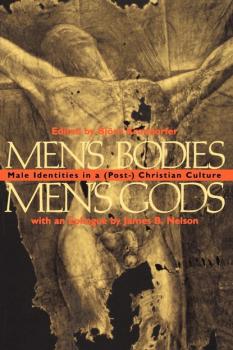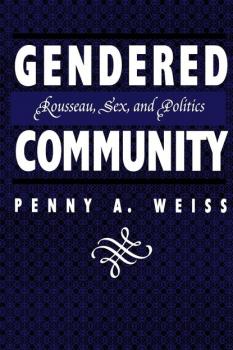ТОП просматриваемых книг сайта:
Управление, подбор персонала
Различные книги в жанре Управление, подбор персонала, доступные для чтения и скачиванияАннотация
From the ardently religious young woman who longs for the life of a male scholar to the young rebel who visits a strip club, smokes pot, and agonizes over her loss of faith to the proud Lubavitcher with a desire for a high-powered career, Stephanie Wellen Levine provides a rare glimpse into the inner worlds and daily lives of these Hasidic girls. Lubavitcher Hasidim are famous for their efforts to inspire secular Jews to become more observant and for their messianic fervor. Strict followers of Orthodox Judaism, they maintain sharp gender-role distinctions.Levine spent a year living in the Lubavitch community of Crown Heights, Brooklyn, participating in the rhythms of Hasidic girlhood. Drawing on many intimate hours among Hasidim and over 30 in-depth interviews, Mystics, Mavericks, and Merrymakers offers rich portraits of individual Hasidic young women and how they deal with the conflicts between the regimented society in which they live and the pull of mainstream American life. This superbly crafted book offers intimate stories from Hasidic teenagers' lives, providing an intriguing twist to a universal theme: the struggle to grow up and define who we are within the context of culture, family, and life-driving beliefs.
Аннотация
Аннотация
Have you wondered: Why women are more sympathetic than men toward O. J. Simpson? Why women were no more supportive of the Equal Rights Amendment than men? Why women are no more likely than men to support a female political candidate? Why women are no more likely than men to embrace feminism–a movement by, about, and for women? Why some women stay with men who abuse them? Loving to Survive addresses just these issues and poses a surprising answer. Likening women's situation to that of hostages, Dee L. R. Graham and her co- authors argue that women bond with men and adopt men's perspective in an effort to escape the threat of men's violence against them. Dee Graham's announcement, in 1991, of her research on male-female bonding was immediately followed by a national firestorm of media interest. Her startling and provocative conclusion was covered in dozens of national newspapers and heatedly debated. In Loving to Survive , Graham provides us with a complete account of her remarkable insights into relationships between men and women. In 1973, three women and one man were held hostage in one of the largest banks in Stockholm by two ex-convicts. These two men threatened their lives, but also showed them kindness. Over the course of the long ordeal, the hostages came to identify with their captors, developing an emotional bond with them. They began to perceive the police, their prospective liberators, as their enemies, and their captors as their friends, as a source of security. This seemingly bizarre reaction to captivity, in which the hostages and captors mutually bond to one another, has been documented in other cases as well, and has become widely known as Stockholm Syndrome. The authors of this book take this syndrome as their starting point to develop a new way of looking at male-female relationships. Loving to Survive considers men's violence against women as crucial to understanding women's current psychology. Men's violence creates ever-present, and therefore often unrecognized, terror in women. This terror is often experienced as a fear for any woman of rape by any man or as a fear of making any man angry. They propose that women's current psychology is actually a psychology of women under conditions of captivitythat is, under conditions of terror caused by male violence against women. Therefore, women's responses to men, and to male violence, resemble hostages' responses to captors. Loving to Survive explores women's bonding to men as it relates to men's violence against women. It proposes that, like hostages who work to placate their captors lest they kill them, women work to please men, and from this springs women's femininity. Femininity describes a set of behaviors that please men because they communicate a woman's acceptance of her subordinate status. Thus, feminine behaviors are, in essence, survival strategies. Like hostages who bond to their captors, women bond to men in an effort to survive. This is a book that will forever change the way we look at male-female relationships and women's lives.
Информация о книге
Автор произведения Dee L.R. Graham
Жанр Управление, подбор персонала
Серия Feminist Crosscurrents
Аннотация
The myths and truths of teen's sexual behavior. Winner of the 2015 Brian McConnell Book Award presented by the International Society for Contemporary Legend Research To hear mainstream media sources tell it, the sexlives of modern teenagers outpace even the smuttiest of cable television shows.Teen girls “sext” explicit photos to boys they like; they wear “sex bracelets”that signify what sexual activities they have done, or will do; they team upwith other girls at “rainbow parties” to perform sex acts on groups of willingteen boys; they form “pregnancy pacts” with their best girlfriends to allbecome teen mothers at the same time. From The Today Show, to CNN, to the New York Times, stories of these eventshave been featured widely in the media. But are most teenage—oryounger—children really going to sex parties and having multiple sexualencounters in an orgy-like fashion? Researcherssay no—teen sex is actually not rampant and teen pregnancy is at low levels.But why do stories like these find such media traffic, exploiting parents’worst fears? How do these rumors get started, and how do they travel around thecountry and even across the globe? In Kids Gone Wild,best-selling authors Joel Best and Kathleen A. Bogle use these stories aboutthe fears of the growing sexualization of childhood to explore what we knowabout contemporary legends and how both traditional media and the internet perpetuatethese rumors while, at times, debating their authenticity. Best and Bogledescribe the process by which such stories spread, trace how and to where they have moved, and track howthey can morph as they travel from one medium to another. Ultimately, they findthat our society’s view of kids raging out of control has drastic andunforeseen consequences, fueling the debate on sex education and affecting policydecisions on everything from the availability of the morning after pill to whois included on sex offender registries. Asurprising look at the truth behind the sensationalism in our culture, Kids Gone Wild is a much-needed wake-upcall for a society determined to believe the worst about its young people.
Аннотация
Describes the daily experiences of Jewish and Italian immigrant women in New York City.
Аннотация
Women, we are told, should not own guns. Women, we are told, are more likely to be injured by their own guns than to fend off an attack themselves. This «fact» is rooted in a fundamental assumption of female weakness and vulnerability. Why should a woman not be every bit as capable as a man of using a firearm in self-defense? And yet the reality is that millions of American women–somewhere between 11,000,000 and 17,000,000–use guns confidently and competently every day. Women are hunting, using firearms in their work as policewomen and in the military, shooting for sport, and arming themselves for personal security in ever-increasing numbers. What motivates women to possess firearms? What is their relationship to their guns? And who exactly are these women? Crucially, can a woman be a gun-owner and a feminist too? Women's growing tendency to arm themselves has in recent years been political fodder for both the right and the left. Female gun owners are frequently painted as «trying to be like men» (the conservative perspective) or «capitulating to patriarchal ideas about power» (the liberal critique). Eschewing the polar extremes in the heated debate over gun ownership and gun control, and linking firearms and feminism in novel fashion, Mary Zeiss Stange and Carol K. Oyster here cut through the rhetoric to paint a precise and unflinching account of America's gun women.
Аннотация
Winner of the 2014 Richard Kalish Innovative Publication Award presented by the Gerontological Society of America Young working mothers are not the only ones who are struggling to balance family life and careers. Many middle-aged American women face this dilemma as they provide routine childcare for their grandchildren while pursuing careers and trying to make ends meet. Employment among middle-aged women is at an all-time high. In the same way that women who reduce employment hours when raising their young children experience reductions in salary, savings, and public and private pensions, the mothers of those same women, as grandmothers, are rearranging hours to take care of their grandchildren, experiencing additional loss of salary and reduced old age pension accumulation. Madonna Harrington Meyer’s Grandmothers at Work, based primarily on 48 in-depth interviews conducted in 2009-2012 with grandmothers who juggle working and minding their grandchildren, explores the strategies of, and impacts on, working grandmothers. While all of the grandmothers in Harrington Meyer’s book are pleased to spend time with their grandchildren, many are readjusting work schedules, using vacation and sick leave time, gutting retirement accounts, and postponing retirement to care for grandchildren. Some simply want to do this; others do it in part because they have more security and flexibility on the job than their daughters do at their relatively new jobs. Many are sequential grandmothers, caring for one grandchild after the other as they are born, in very intensive forms of grandmothering. Some also report that they are putting off retirement out of economic necessity, in part due to the amount of financial help they are providing their grandchildren. Finally, some are also caring for their frail older parents or ailing spouses just as intensively. Most expect to continue feeling the pinch of paid and unpaid work for many years before their retirement. Grandmothers at Work provides a unique perspective on a phenomenon faced by millions of women in America today.
Аннотация
Increasingly feminists around the world have successfully campaigned for recognition of women's full personhood and empowerment. Global Feminism explores the social and political developments that have energized this movement. Drawn from an international group of scholars and activists, the authors of these original essays assess both the opportunities that transnationalism has created and the tensions it has inadvertently fostered. By focusing on both the local and global struggles of today's feminist activists this important volume reveals much about women's changing rights, treatment and impact in the global world. Contributors: Melinda Adams, Aida Bagic, Yakin Ertürk, Myra Marx Ferree, Amy G. Mazur, Dorothy E. McBride, Hilkka Pietilä, Tetyana Pudrovska, Margaret Snyder, Sarah Swider, Aili Mari Tripp, Nira Yuval-Davis.
Аннотация
Аннотация
To be fat in a thin-obsessed gay culturecan be difficult. Despite affectionate in-group monikers for big gay men–chubs,bears, cubs–the anti-fat stigma that persists in American culture at largestill haunts these individuals who often exist at the margins of gaycommunities. In Fat Gay Men, JasonWhitesel delves into the world of Girth & Mirth, a nationally known socialclub dedicated to big gay men, illuminating the ways in which these men formidentities and community in the face of adversity. In existence for over fortyyears, the club has long been a refuge and ‘safe space’ for such men. Both a partial insider as a gay man and anoutsider to Girth & Mirth, Whitesel offers an insider’s critique of the gaymovement, questioning whether the social consequences of the failure to beheight-weight proportionate should be so extreme in the gay community. This book documents performances at club events and examines howparticipants use allusion and campy-queer behavior to reconfigure and reclaimtheir sullied body images, focusing on the numerous tensions of marginalizationand dignity that big gay men experience and how they negotiate these tensionsvia their membership to a size-positive group. Based on ethnographic interviewsand in-depth field notes from more than 100 events at bar nights, caféklatches, restaurants, potlucks, holiday bashes, pool parties, movie nights,and weekend retreats, the book explores the woundedness that comes from beingrelegated to an inferior position in gay hierarchies, and yet celebrates howsome gay men can reposition the shame of fat stigma through carnival, camp, andplay. A compelling and rich narrative, FatGay Men provides a rare glimpse into an unexplored dimension of weight andbody image in American culture.
Информация о книге
Автор произведения Jason Whitesel
Жанр Управление, подбор персонала
Серия Intersections










